Speaker Information
We will continue to update this page until all the entries are filled. Please check back.
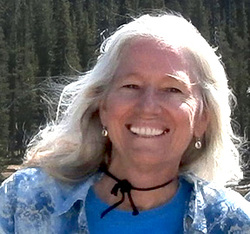
Jo Ann Baumgartner, Executive Director, Wild Farm Alliance (wildfarmalliance.org)
How Farms Can Benefit From and Support Biological Diversity: Ecosystem services are more often working on organic farms, but conventional farms can also benefit when diversity is increased in and around the farm. Pollination, pest control, water retention, soil health, and climate change resilience increase with biodiversity. This presentation will cover the many ways to encourage diversity thereby supporting a food web of community interactions that helps the farm to function.
Jo Ann Baumgartner works on conservation-based farming topics. She wrote the initial draft of the recently published USDA National Organic Program Natural Resources and Biodiversity Conservation Guidance; is the main author of Biodiversity Conservation: An Organic Farmer’s Guide; and of Co-Managing Farm Stewardship with Food Safety GAPs and Conservation Practices: A Grower’s and Conservationist’s Handbook. She also co-edited Farming and the Fate of Wild Nature: Essays in Conservation-Based Agriculture; and has written many WFA Briefing and Policy Papers including Wild Pollinators: Agriculture’s Forgotten Pollinators. Before joining WFA in 2001, she addressed organic and sustainable cotton production, was senior research editor for Life on the Edge, a book of California’s rare wildlife species, and worked on a research project using wastewater on freshly eaten conventional crops. Jo Ann was an organic farmer for over a decade on the Central Coast of California. For her Master’s research, she studied bird predation of insects in apple orchards. Her undergraduate degree is in soil and water science. Jo Ann has a keen interest in the conservation of native species for their own sake, and for the connections between farms and the larger ecosystem.
How Farms Can Benefit From and Support Biological Diversity: Ecosystem services are more often working on organic farms, but conventional farms can also benefit when diversity is increased in and around the farm. Pollination, pest control, water retention, soil health, and climate change resilience increase with biodiversity. This presentation will cover the many ways to encourage diversity thereby supporting a food web of community interactions that helps the farm to function.
Jo Ann Baumgartner works on conservation-based farming topics. She wrote the initial draft of the recently published USDA National Organic Program Natural Resources and Biodiversity Conservation Guidance; is the main author of Biodiversity Conservation: An Organic Farmer’s Guide; and of Co-Managing Farm Stewardship with Food Safety GAPs and Conservation Practices: A Grower’s and Conservationist’s Handbook. She also co-edited Farming and the Fate of Wild Nature: Essays in Conservation-Based Agriculture; and has written many WFA Briefing and Policy Papers including Wild Pollinators: Agriculture’s Forgotten Pollinators. Before joining WFA in 2001, she addressed organic and sustainable cotton production, was senior research editor for Life on the Edge, a book of California’s rare wildlife species, and worked on a research project using wastewater on freshly eaten conventional crops. Jo Ann was an organic farmer for over a decade on the Central Coast of California. For her Master’s research, she studied bird predation of insects in apple orchards. Her undergraduate degree is in soil and water science. Jo Ann has a keen interest in the conservation of native species for their own sake, and for the connections between farms and the larger ecosystem.
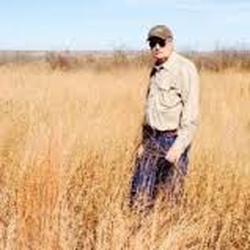
J. R. Bell, USDA/NRCS Rangeland Management Specialist (retired); Tahoka Lake Trip Leader
J.R. has regretfully had to cancel from the field day. We apologize for any inconvenience and disappointment.
J. R. worked for NRCS as a range management specialist for 32 years, all in the northwest Texas area. He served in county offices in Post, Andrews and Stinnett and traveled as a range specialist for the Lubbock and Amarillo Areas assisting local NRCS offices and Soil and Water Conservation Districts. His principal duties were to train new employees in range management and also to provide technical assistance to individual ranchers in solving range management problems. J. R. received several awards from the Society for Range Management and from the USDA. After retirement, he worked as a consultant for Dupont Company helping to evaluate new range and pasture herbicides. J. R. currently serves as technical consultant to the local Grazing Lands Conservation Initiative for the Panhandle-South Plains area, and he is a member of the Native Plant Society of Texas. J. R.'s areas of personal interest are historical studies of the local area with emphasis on old trails of the mid to late 1800’s, hunting, hiking and target shooting.
"I have been enthralled with the native vegetation of Texas and the Great Plains regions from the time I was a high school student in Childress, Texas. I received a B.S. degree in Range and Wildlife Management from Texas Tech in 1970 and went to work for the Soil Conservation Service as soon as I graduated. I remained in their employ for some 32+ years and was privileged to work with many professional range people who shared my passion for range and native vegetation. These folks were an important part of my professional pursuits, but I must say that I probably learned more from the countless private ranchers with whom I worked than from any other source. The ranching community is a unique and a very valued group of men and women and they have my deepest respect and admiration. Working with people who steward our natural resources has been challenging and a lot of fun. I would not trade the experiences that I have had for the world.
Range management is said to be both an art and a science, and I truly believe that is the case. Working with groups and individuals to sustain and improve our native rangelands has been a constant learning process. I was once told that range management is merely applied ecology and that is certainly the way it has worked out for me. It has been true whether my work was with USDA, or with DuPont, or as a private consultant. The basic principles remain the same."
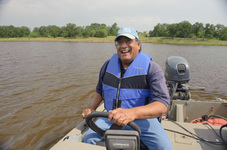
Russell Castro, USDA/NRCS State Wildlife Biologist; POWWOW Board Member; Tahoka Lake Trip Leader
Russell Castro is the State Wildlife Biologist for the Natural Resources Conservation Service (NRCS) and is headquartered in Temple, Texas. Castro provides leadership for the NRCS biology discipline in Texas. He coordinates and leads the efforts for the five NRCS zone biologists to meet the demands of landowner interest for conservation efforts addressing wildlife, wetlands, threatened and endangered species, etc.
Castro also provides guidance for NRCS state leadership addressing policy and technical issues. He has worked 35 years with the NRCS as a range management specialist in Zapata, Bandera, and Tulia counties; as a district conservationist in Edna; as a zone biologist in Terrell/Weatherford covering 51 counties; as a water resources biologist; and, presently, as the state wildlife biologist. Russell serves as lead on the Texas NRCS Riparian Team and on several national NRCS working groups; is on the boards of the Oaks and Prairies Joint Venture and Rio Grande Joint Venture, and is a member of the State Comptroller's Science Team and the Endangered Species Task Force.
Russell Castro is the State Wildlife Biologist for the Natural Resources Conservation Service (NRCS) and is headquartered in Temple, Texas. Castro provides leadership for the NRCS biology discipline in Texas. He coordinates and leads the efforts for the five NRCS zone biologists to meet the demands of landowner interest for conservation efforts addressing wildlife, wetlands, threatened and endangered species, etc.
Castro also provides guidance for NRCS state leadership addressing policy and technical issues. He has worked 35 years with the NRCS as a range management specialist in Zapata, Bandera, and Tulia counties; as a district conservationist in Edna; as a zone biologist in Terrell/Weatherford covering 51 counties; as a water resources biologist; and, presently, as the state wildlife biologist. Russell serves as lead on the Texas NRCS Riparian Team and on several national NRCS working groups; is on the boards of the Oaks and Prairies Joint Venture and Rio Grande Joint Venture, and is a member of the State Comptroller's Science Team and the Endangered Species Task Force.
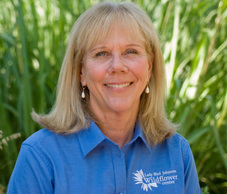
Karen Clary, PhD., Program Manager, Plant Conservation, Lady Bird Johnson Wildflower Center, Austin; POWWOW Milkweed Propagation Workshop Leader; Tahoka Lake Trip Leader
Project Milkweed – Collecting Important Milkweed Ecotypes for Monarchs: Karen Clary (UT-Lady Bird Johnson Wildflower Center) (Presenter), Minnette Marr (UT-Lady Bird Johnson Wildflower Center), Sean Watson (UT-Lady Bird Johnson Wildflower Center), Susan Prosperie (UT-Lady Bird Johnson Wildflower Center)
Milkweeds are crucial for monarch survival, because migrating monarchs lay their eggs on milkweeds, and when the larvae hatch, they ingest milkweed plant toxins to bolster their chemical defense system. Texas milkweeds host the monarchs in both the spring as they head north to Canada and in the fall when they migrate south to Mexico.
In spite of this, milkweed populations are dwindling, and there is concern that there may not be enough milkweeds to sustain the monarch. With Project Milkweed, the University of Texas-Lady Bird Johnson Wildflower Center is expanding the network of volunteer cooperators to collect seeds of ecotypes for ten native milkweed species. Milkweed ecotypes are genetically distinctive populations of a milkweed species that grow in different parts of its geographic range. The seed collections will be used in communities to grow and adopt seedlings of local ecotypes and to stimulate production of bulk seed quantities for habitat restoration in areas of need. The Wildflower Center is researching and developing ways to propagate milkweeds.
We are seeking volunteer cooperators, including private land owners, Master Naturalists and Master Gardeners, members of the Native Plant Society of Texas, Native Prairies Association of Texas, friends of parks, land trusts and youth groups to become involved in the project. These cooperators are encouraged to follow the wild seed collection protocol developed by the Xerces Society for Invertebrate Conservation and to help grow more plants for their communities.
Karen Clary is the manager of the Plant Conservation Program at the Lady Bird Johnson Wildflower Center at The University of Texas at Austin. She provides programmatic oversight for all conservation programs (outreach, seed banking, rare plants and invasive species control) and teaches native plant taxonomy for the Wildflower Center.
Karen holds a Ph.D. in botany from The University of Texas at Austin, where she studied speciation patterns, biogeography and taxonomy of Yucca L. Prior to coming to the Wildflower Center, Clary served as a wildlife habitat resource assessment biologist at Texas Parks and Wildlife Department, Austin. She worked with public and private partnerships to promote wildlife conservation through use of environmentally friendly best practices on development projects and to implement the National Environmental Policy Act and the Endangered Species Act.
Project Milkweed – Collecting Important Milkweed Ecotypes for Monarchs: Karen Clary (UT-Lady Bird Johnson Wildflower Center) (Presenter), Minnette Marr (UT-Lady Bird Johnson Wildflower Center), Sean Watson (UT-Lady Bird Johnson Wildflower Center), Susan Prosperie (UT-Lady Bird Johnson Wildflower Center)
Milkweeds are crucial for monarch survival, because migrating monarchs lay their eggs on milkweeds, and when the larvae hatch, they ingest milkweed plant toxins to bolster their chemical defense system. Texas milkweeds host the monarchs in both the spring as they head north to Canada and in the fall when they migrate south to Mexico.
In spite of this, milkweed populations are dwindling, and there is concern that there may not be enough milkweeds to sustain the monarch. With Project Milkweed, the University of Texas-Lady Bird Johnson Wildflower Center is expanding the network of volunteer cooperators to collect seeds of ecotypes for ten native milkweed species. Milkweed ecotypes are genetically distinctive populations of a milkweed species that grow in different parts of its geographic range. The seed collections will be used in communities to grow and adopt seedlings of local ecotypes and to stimulate production of bulk seed quantities for habitat restoration in areas of need. The Wildflower Center is researching and developing ways to propagate milkweeds.
We are seeking volunteer cooperators, including private land owners, Master Naturalists and Master Gardeners, members of the Native Plant Society of Texas, Native Prairies Association of Texas, friends of parks, land trusts and youth groups to become involved in the project. These cooperators are encouraged to follow the wild seed collection protocol developed by the Xerces Society for Invertebrate Conservation and to help grow more plants for their communities.
Karen Clary is the manager of the Plant Conservation Program at the Lady Bird Johnson Wildflower Center at The University of Texas at Austin. She provides programmatic oversight for all conservation programs (outreach, seed banking, rare plants and invasive species control) and teaches native plant taxonomy for the Wildflower Center.
Karen holds a Ph.D. in botany from The University of Texas at Austin, where she studied speciation patterns, biogeography and taxonomy of Yucca L. Prior to coming to the Wildflower Center, Clary served as a wildlife habitat resource assessment biologist at Texas Parks and Wildlife Department, Austin. She worked with public and private partnerships to promote wildlife conservation through use of environmentally friendly best practices on development projects and to implement the National Environmental Policy Act and the Endangered Species Act.

Manuel De Leon - USDA-NRCS Wildlife Biologist; Tahoka Lake Pasture, Board of Directors/PowWow Trip Leader
Manuel De Leon is the Zone 1 Wildlife Biologist for the USDA - Natural
Resources Conservation Service. He provides technical assistance to field office
personnel and landowners within 51 counties in the Texas Panhandle and South Plains regions. Prior to holding his current position, he served as the District Conservationist in Muleshoe and the District Conservationist/Resource Team Leader in Pampa. Manuel began his career as a student trainee in 1991 and has now served 12 years with the NRCS. Prior to holding his current position, he served as a wildlife biologist with the U.S. Fish and Wildlife Service (USFWS). He worked in Colorado, Montana, North Dakota, Texas, and Utah during his time with USFWS. Some of Manuel's many duties ranged from banding trumpeter swans in Montana; to banding mottled ducks on the Texas Coast; to banding songbirds along the Green River in Utah; to providing law enforcement assistance at the Department of Interior Building in Washington D.C. after 9/11. Raised in New Home, Texas, Manuel earned his B.S. degree in Wildlife Management and a M.S. degree in Wildlife Science from Texas Tech University. His career has been devoted to helping protect and conserve valuable natural resources, enhancing wildlife and the environment through voluntary planning with private landowners.
Manuel De Leon is the Zone 1 Wildlife Biologist for the USDA - Natural
Resources Conservation Service. He provides technical assistance to field office
personnel and landowners within 51 counties in the Texas Panhandle and South Plains regions. Prior to holding his current position, he served as the District Conservationist in Muleshoe and the District Conservationist/Resource Team Leader in Pampa. Manuel began his career as a student trainee in 1991 and has now served 12 years with the NRCS. Prior to holding his current position, he served as a wildlife biologist with the U.S. Fish and Wildlife Service (USFWS). He worked in Colorado, Montana, North Dakota, Texas, and Utah during his time with USFWS. Some of Manuel's many duties ranged from banding trumpeter swans in Montana; to banding mottled ducks on the Texas Coast; to banding songbirds along the Green River in Utah; to providing law enforcement assistance at the Department of Interior Building in Washington D.C. after 9/11. Raised in New Home, Texas, Manuel earned his B.S. degree in Wildlife Management and a M.S. degree in Wildlife Science from Texas Tech University. His career has been devoted to helping protect and conserve valuable natural resources, enhancing wildlife and the environment through voluntary planning with private landowners.
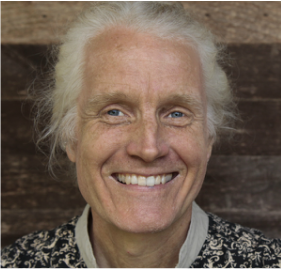
Sam Droege, Biologist, USGS Patuxent Wildlife Research Center; POWWOW Native Bee ID Workshop Leader; Tahoka Lake Trip Leader
A Very Broad Overview of the Role of Native Bees in Landscapes: Patterns, Biology, Conservation, Management, Agriculture, and Surveys: Clearly there is not enough time in a short presentation to cover all these topics well, or even moderately well. However, given the past low visibility of native bees in popular culture, an overview probably serves the most good. Some patterns that will be discussed include: Estimated 4,000 species north of Mexico/~400 not described; 20% are nest parasites on other bees; 25% of pollen collectors are specialists on small groups of plants; much more taxonomic work is needed; identification of bees is the bottleneck for most studies of bees; trap and net collections will be discussed; urban/native landscapes contrasted; native bees can be primary pollinators in agriculture; honey bee biology has little overlap with and is radically different from ALL of our native species; honey bee pathogens are largely not an issue to native bees; habitat loss and floral degradation are THE conservation issues for native bees; roles of pesticides in regulating native bee populations is murky at best.
Sam Droege grew up in Maryland, received an undergraduate degree at the University of Maryland and a Master’s at the State University of New York – Syracuse. Most of his career has been spent at the USGS Patuxent Wildlife Research Center. He has coordinated the North American Breeding Bird Survey Program, developed the North American Amphibian Monitoring Program, the Bioblitz, Cricket Crawl, and FrogwatchUSA programs and worked on the design and evaluation of monitoring programs. Currently, Sam is developing an inventory and monitoring program for native bees, online identification guides for North American bees at www.discoverlife.org, and with Eric Ross is reviving the North American Bird Phenology Program.
A Very Broad Overview of the Role of Native Bees in Landscapes: Patterns, Biology, Conservation, Management, Agriculture, and Surveys: Clearly there is not enough time in a short presentation to cover all these topics well, or even moderately well. However, given the past low visibility of native bees in popular culture, an overview probably serves the most good. Some patterns that will be discussed include: Estimated 4,000 species north of Mexico/~400 not described; 20% are nest parasites on other bees; 25% of pollen collectors are specialists on small groups of plants; much more taxonomic work is needed; identification of bees is the bottleneck for most studies of bees; trap and net collections will be discussed; urban/native landscapes contrasted; native bees can be primary pollinators in agriculture; honey bee biology has little overlap with and is radically different from ALL of our native species; honey bee pathogens are largely not an issue to native bees; habitat loss and floral degradation are THE conservation issues for native bees; roles of pesticides in regulating native bee populations is murky at best.
Sam Droege grew up in Maryland, received an undergraduate degree at the University of Maryland and a Master’s at the State University of New York – Syracuse. Most of his career has been spent at the USGS Patuxent Wildlife Research Center. He has coordinated the North American Breeding Bird Survey Program, developed the North American Amphibian Monitoring Program, the Bioblitz, Cricket Crawl, and FrogwatchUSA programs and worked on the design and evaluation of monitoring programs. Currently, Sam is developing an inventory and monitoring program for native bees, online identification guides for North American bees at www.discoverlife.org, and with Eric Ross is reviving the North American Bird Phenology Program.
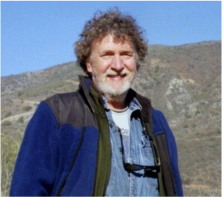
Sam Earnshaw, Executive Director, Hedgerows Unlimited; USDA-NRCS/Technical Service Provider
Planting Habitat on Farms: Design, Techniques, Issues: Hedgerows and grassed waterways are increasingly being planted on farms and can have multiple functions: they can serve as habitat for beneficial insects,
pollinators and other wildlife; provide erosion protection and weed control;
stabilize waterways; serve as windbreaks; reduce non-point source water
pollution and groundwater pollution; increase surface water infiltration; buffer
from pesticide drift, noise, odors, and dust; act as living fences and boundary
lines; increase biodiversity; and provide an aesthetic resource. Many plants attract native bees and other pollinators, and some hedgerow and windbreak plants, such as citrus or other fruit trees and herbal plants, can have economic returns. As with any planting, problems and issues can be dealt with through management practices. Most growers use plants that they individually like and report that they are pleased with the benefits that farmscaping brings to their farms. The presentation will show a diversity of projects, focusing on established practices.
Sam Earnshaw studied Forestry at U.C. Berkeley, graduating in 1974. In the mid-1980’s Sam and his wife Jo Ann Baumgartner started their own farm, Neptune Farms, and marketed organic vegetables and cut flowers to retail stores, farmers markets and wholesalers in the local area. In 1992, Sam began working as Lighthouse Farm coordinator for the Community Alliance with Family Farmers (CAFF), sponsoring monthly meetings and field tours for farmers, sharing techniques in biologically based farming techniques. Sam's work with local growers in Watsonville, Santa Cruz, Salinas and Hollister through this program led to CAFF's involvement in land use and water issues on the Central Coast. Sam is a Technical Service Provider (TSP) with NRCS and is currently working on the design and installation of hedgerows, grassed waterways, filter strips and riparian restoration on farms. He has been planting conservation plantings on farms since 1996. He is the author of Hedgerows for California Agriculture: A Resource Guide
published by CAFF (available on the CAFF website: www.caff.org).
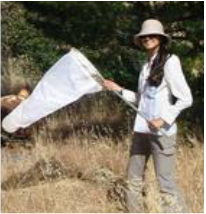
Shalene Jha, Ph.D – Assistant Professor, Integrative Biology Department, University of Texas at Austin, Jha Bee Lab; POWWOW Native Bee ID Workshop Leader; Tahoka Lake Trip Leader
Pollination mutualisms: from prairies to cotton farms: Plant-pollinator mutualisms are a critical part of terrestrial ecosystems, across both cultivated and natural landscapes. This talk will cover the impact of landscape composition on pollinator foraging patterns, species-level diversity, and pollination services. I’ll also discuss what recent research tells us about how native pollinators colonize and disperse across natural and human-altered landscapes.
Shalene Jha is an assistant professor within the Integrative Biology Department at the University of Texas at Austin. Her research investigates how global land use change influences gene flow, foraging patterns, and population viability for plants and animals. Specifically, her Jha Bee Lab is conducting research on plant and pollinator landscape ecology, population genetics and disease ecology, and the provision of ecosystem services (e.g., pollination) within human-altered landscapes in California, Texas, Panama and Mexico.
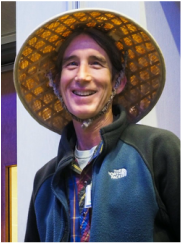
Randy Johnson, Dallas Zoo Horticulture Manager/Randy Johnson Organics, POWWOW Board Member
Native Plants: Relevance and Application: Can the urban, suburban and metropolitan property owner influence pollinator populations and diversity? Home and business owners, city and county governments, school districts and more all control prime potential pollinator habitat. How and why native plants are more relevant than ever in these locales will be discussed.
Johnson is from Mesquite, Texas and graduated from Texas A&M with his degree in wildlife and fisheries sciences. He is the past director of Horticulture at Texas Discovery Gardens (TDG) in Dallas. His planning and native plant design won TDG recognition as the first public garden in Texas to be officially designated as "organic." Randy is the current horticulture manager at the Dallas Zoo.
He also offers organic horticulture and environmental consultations through his personal business, Randy Johnson Organics. Randy grows and sells organic native plants (including milkweed) from seed he collects from local prairie remnants and forests. He serves on the board of directors for the Lake Highlands Community Garden and the Dallas chapter of the Native Plant Society of Texas. John Fairey recently appointed Johnson to a lifetime board member position for Peckerwood Gardens, and his landscape work has been featured on two segments of PBS's This Old House.
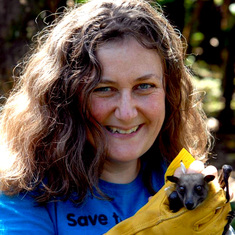
Tigga Kingston, PhD., Associate Professor, Department of Biological Sciences, Kingston Lab, Texas Tech University; Tahoka Trip Leader
Wind Farms, Wetlands & White Nose: Challenges to Bat Conservation on the High Plains - Bats provide critical ecosystem services as agents of pest suppression, pollinators and seed dispersers. Tragically, populations are declining throughout the world as a consequence of human activities. Here I discuss the contribution of bats to the ecosystems of the High Plains, and the many challenges they face, most notably mortality at wind turbine installations and loss of playa wetlands, and the looming threat of the deadly white nose syndrome, recently confirmed in Arkansas.
Dr. Tigga Kingston is an Associate Professor in the Department of Biological Sciences Texas Tech University (www.kingstonlab.org) and a central figure for the conservation of bats in Southeast Asia. Tigga is the founder and director of the Southeast Asian Bat Conservation Research Unit (www.seabcru.org), and is the Old World Co-Chair for Bat Specialist Group of the IUCN’s Species Survival Commission. She is a long-time member of the North American Society for Bat Research, and has served a rotation on the Board of Directors. Tigga earned a PhD degree at Boston University, USA where she studied the community ecology of bat assemblages in Peninsular Malaysia. Tigga and her lab focus on factors shaping bat diversity in unmodified habitats, and the response of assemblages to land-use change and human disturbance.
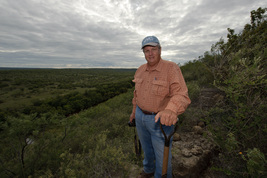
Ricky Linex, USDA/NRCS Wildlife Biologist and Author; POWWOW Board Member; Tahoka Lake Trip Leader
Ricky Linex is a wildlife biologist for the Natural Resources Conservation Service (NRCS) headquartered in Weatherford, Texas. Linex works 51 counties in north central Texas covering the Rolling Plains, Cross Timbers, Blackland Prairie and Post Oak Savannah vegetational regions. He has worked 34 years with NRCS in Goldthwaite, Snyder and Abilene with the past 13 of those years in Weatherford.
Ricky serves as an instructor with the Rolling Plains Bobwhite Brigade and the North Texas Buckskin Brigade. In 2009 he was selected as Educator of the Year by the Texas Chapter, The Wildlife Society. He is the author of the brand new Range Plants of North Central Texas: A Land Users Guide to Their Identification, Value and Management, a plant identification book for north central Texas. This book has 324 grasses, forbs and woody plants of the area, and is full of photos. A valuable addition within this book is the detailed browsing, grazing and seed value of each plant for cattle, sheep, goats, deer, dove, quail and turkey. Nearly all the plant species listed in this book can be found throughout the state of Texas and beyond. Ricky is also the co-founder and editor of the very popular Texas quarterly e-publication, The Reverchon Naturalist.
Ricky Linex is a wildlife biologist for the Natural Resources Conservation Service (NRCS) headquartered in Weatherford, Texas. Linex works 51 counties in north central Texas covering the Rolling Plains, Cross Timbers, Blackland Prairie and Post Oak Savannah vegetational regions. He has worked 34 years with NRCS in Goldthwaite, Snyder and Abilene with the past 13 of those years in Weatherford.
Ricky serves as an instructor with the Rolling Plains Bobwhite Brigade and the North Texas Buckskin Brigade. In 2009 he was selected as Educator of the Year by the Texas Chapter, The Wildlife Society. He is the author of the brand new Range Plants of North Central Texas: A Land Users Guide to Their Identification, Value and Management, a plant identification book for north central Texas. This book has 324 grasses, forbs and woody plants of the area, and is full of photos. A valuable addition within this book is the detailed browsing, grazing and seed value of each plant for cattle, sheep, goats, deer, dove, quail and turkey. Nearly all the plant species listed in this book can be found throughout the state of Texas and beyond. Ricky is also the co-founder and editor of the very popular Texas quarterly e-publication, The Reverchon Naturalist.

Scott Longing, Ph.D., Assistant Professor of Entomology, Texas Tech University Department of Plant and Soil Sciences; Lubbock POWWOW Steering Committee; POWWOW Native Bee ID Workshop Leader; Tahoka Lake Trip Leader
Pollinators on the Plains: New Research Focused on Pollinator Ecology and Conservation: While information on pollinator biodiversity, ecology, and contributions to agricultural production has advanced in recent years, less is known about these patterns and processes on the Southern High Plains in western Texas. We are currently conducting numerous related studies across urban, agricultural and rangeland systems to better understand pollinator biodiversity, habitat associations and ecological drivers affecting pollinator communities.
A 2015 USDA Conservation Innovation Grant has provided key funding to investigate how pollinators and their habitat are supported across dominant agricultural lands on the Southern High Plains. We are working with landowners across diverse agroecosystems - conventional and organic cotton, small local vegetable farms, apple orchards, pumpkin/melon farms, and mixed-use farms - to better understand pollinators and their habitat resources and to demonstrate land management practices for both existing habitat and restored habitat associated with NRCS conservation practices. Ongoing school and community outreach, including the establishment of insect hotels and pollinator gardens, has emphasized the essential roles of pollinators in nature and human nutrition.
Scott Longing is an assistant professor of entomology in the Department of Plant and Soil Science at Texas Tech University, where he teaches Introductory Entomology, Pesticides and Integrated Pest Management. His research focuses on determining environmental drivers of aquatic and terrestrial insect communities across unique habitats of the southern United States, from headwater stream networks of the Appalachian and Ozark Mountains to the sandhills of western Texas. A major focus of research includes determining habitat associations and threats to endemic species of concern from these systems. Scott is directing current graduate and undergraduate students on multiple projects addressing pollinator communities across urban, agricultural and rangeland systems on the Southern High Plains.
Recent international collaboration on pollinator decline includes Scott's contributions to a new book titled The Business of Bees: An Integrated Approach to Bee Decline and Corporate Responsibility.
Pollinators on the Plains: New Research Focused on Pollinator Ecology and Conservation: While information on pollinator biodiversity, ecology, and contributions to agricultural production has advanced in recent years, less is known about these patterns and processes on the Southern High Plains in western Texas. We are currently conducting numerous related studies across urban, agricultural and rangeland systems to better understand pollinator biodiversity, habitat associations and ecological drivers affecting pollinator communities.
A 2015 USDA Conservation Innovation Grant has provided key funding to investigate how pollinators and their habitat are supported across dominant agricultural lands on the Southern High Plains. We are working with landowners across diverse agroecosystems - conventional and organic cotton, small local vegetable farms, apple orchards, pumpkin/melon farms, and mixed-use farms - to better understand pollinators and their habitat resources and to demonstrate land management practices for both existing habitat and restored habitat associated with NRCS conservation practices. Ongoing school and community outreach, including the establishment of insect hotels and pollinator gardens, has emphasized the essential roles of pollinators in nature and human nutrition.
Scott Longing is an assistant professor of entomology in the Department of Plant and Soil Science at Texas Tech University, where he teaches Introductory Entomology, Pesticides and Integrated Pest Management. His research focuses on determining environmental drivers of aquatic and terrestrial insect communities across unique habitats of the southern United States, from headwater stream networks of the Appalachian and Ozark Mountains to the sandhills of western Texas. A major focus of research includes determining habitat associations and threats to endemic species of concern from these systems. Scott is directing current graduate and undergraduate students on multiple projects addressing pollinator communities across urban, agricultural and rangeland systems on the Southern High Plains.
Recent international collaboration on pollinator decline includes Scott's contributions to a new book titled The Business of Bees: An Integrated Approach to Bee Decline and Corporate Responsibility.
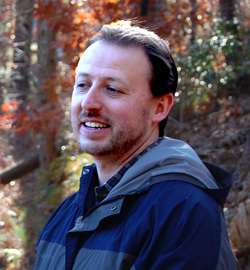
Jon Lundgren, PhD., Blue Dasher Farm and Ecdysis Foundation, Agroecologist and Research scientist
The role of regenerative agriculture in solving the bee problem: Many of the planetary problems are linked directly or indirectly to the simplification of food production systems. The productivity of these simplified production systems (e.g., monocultures of corn, feed lots of animals, acres of sterilized almond orchards, etc.) can only be maintained through agrichemical inputs that are costly to the farmer and the environment. We need a better way. The type of transformational, systems-level changes that we need in our food production systems must come from the bottom up. And visionary farmers are already leading these changes, often times ahead of the science. To solve the bee problem, we must heal the soil.
Dr. Lundgren is an agroecologist, the Director of the ECDYSIS Foundation www.ecdysis.bio, and the CEO for Blue Dasher Farm www.bluedasher.farm. Lundgren’s research focuses on assessing the ecological risk of pest management strategies and developing long-term solutions for sustainable food systems.

Cynthia McKenney, EdD., Associate Chair and Rockwell Endowed Professor of Horticulture in Plant and Soil Science, Texas Tech University
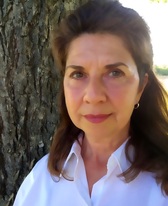
Carrie McLaughlin, Texas Pollinator POWWOW, President of the Board, Coordinator and Moderator
Carrie is a conservationist and naturalist of long standing, with a strong, abiding interest in ecological systems. She has planned and coordinated several successful, well-attended training seminars for naturalists, botanists, field researchers and others in the North Central Texas area in the past few years.
She has also labored intermittently at plant nurseries and growers' farms for the last decade and has gardened since her earliest childhood, when she stubbornly persisted in transplanting Alleghany Highland woodland wildflowers to the Shenandoah Valley year after year, in spite of overwhelming and continual defeat. Carrie is a certified Texas Master Naturalist, an Audubon Society Master Birder, a Botanical Research Institute of TX herbarium volunteer, a Texas Bluebird Society member and a volunteer park ranger at Dinosaur Valley State Park.
Carrie is a born-bred-and-raised Virginian, who has visited in Texas for an awfully long time now. She is deeply committed to being a good steward of the precious gifts of nature that God has given us, and is a passionate lover of same.
Carrie is a conservationist and naturalist of long standing, with a strong, abiding interest in ecological systems. She has planned and coordinated several successful, well-attended training seminars for naturalists, botanists, field researchers and others in the North Central Texas area in the past few years.
She has also labored intermittently at plant nurseries and growers' farms for the last decade and has gardened since her earliest childhood, when she stubbornly persisted in transplanting Alleghany Highland woodland wildflowers to the Shenandoah Valley year after year, in spite of overwhelming and continual defeat. Carrie is a certified Texas Master Naturalist, an Audubon Society Master Birder, a Botanical Research Institute of TX herbarium volunteer, a Texas Bluebird Society member and a volunteer park ranger at Dinosaur Valley State Park.
Carrie is a born-bred-and-raised Virginian, who has visited in Texas for an awfully long time now. She is deeply committed to being a good steward of the precious gifts of nature that God has given us, and is a passionate lover of same.
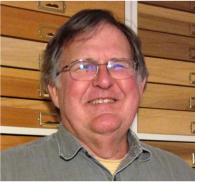
John (Jack) L. Neff, Ph.D., Director, Central Texas Melittological Institute, Austin, TX; POWWOW Native Bee ID Workshop Leader; Tahoka Lake Trip Leader
Floral host relationships of Texas Bees: Bees are herbivores, albeit rather specialized ones. More than a thousand species of bees call Texas home, and a majority of these show varying degrees of floral host specificity (AKA oligolecty). The talk will examine the major patterns of floral host specificity among Texas bees and will attempt to relate these to efforts to locally maximize bee diversity. In addition, the importance of other floral resource systems such as oil flowers and vibratile pollen harvesting will be discussed.
Jack Neff was raised in rural eastern Washington State and went to college in California (Stanford and U. C. Santa Cruz) ,where he was introduced to native bees. He has spent the last 35 years in Austin, Texas, studying bee biology and has authored more than 50 papers on solitary bees and bee biology. Besides attempting to develop a full picture of the Texas bee fauna, Jack has extensive field experience in the bees of the arid regions of Argentina and Chile. Beyond a general interest in all aspects of the biology of solitary bees, he has particular interests in the evolution of host specificity (oligolecty) and oil collection.
Floral host relationships of Texas Bees: Bees are herbivores, albeit rather specialized ones. More than a thousand species of bees call Texas home, and a majority of these show varying degrees of floral host specificity (AKA oligolecty). The talk will examine the major patterns of floral host specificity among Texas bees and will attempt to relate these to efforts to locally maximize bee diversity. In addition, the importance of other floral resource systems such as oil flowers and vibratile pollen harvesting will be discussed.
Jack Neff was raised in rural eastern Washington State and went to college in California (Stanford and U. C. Santa Cruz) ,where he was introduced to native bees. He has spent the last 35 years in Austin, Texas, studying bee biology and has authored more than 50 papers on solitary bees and bee biology. Besides attempting to develop a full picture of the Texas bee fauna, Jack has extensive field experience in the bees of the arid regions of Argentina and Chile. Beyond a general interest in all aspects of the biology of solitary bees, he has particular interests in the evolution of host specificity (oligolecty) and oil collection.
 Photo by Eddie Rivers©
Photo by Eddie Rivers©
Robert Michael Pyle, PhD., Author, Lepidopterist, Founder of the Xerces Society for Invertebrate Conservation (photo copyright: Eddie Rivers)
Pollinators, Plants, and People on the Edge of What's Left: As pollinator conservationists, most of the habitats we have to work with have been greatly altered from their former condition. If we are to enhance diversity and abundance of the species we wish to favor, we must learn to appreciate and work with the ragged remainders of the world that went before.
Both as a writer and a biologist, I have long had a love affair with damaged lands. Having grown up myself as a denizen of the farmed-out drylands on the outskirts of Denver, I gained an appreciation for scrappy habitats and the adaptable organisms they can support. There is no such thing as a wasteland, but if we are to be successful in restoring richer populations of native plants and pollinators, we must first attend to the worth of what's left now--including, sometimes, exotic plants to which native butterflies and other animals have adapted in the absence of their indigenous hosts. I maintain that if it weren't for such adaptive shifts, many more of the building blocks of future ecosystems would have been lost by now. This unpopular truth may cause us to question our assumptions about "weed control."
Bob Pyle studied butterfly conservation at the Monks Wood Experimental Station in England as a Fulbright Scholar, leading to his founding of the Xerces Society in 1971. Xerces is now the largest pollination protection team in the world. Pyle earned his Ph.D. at Yale University, where he investigated Lepidoptera eco-geography and conservation under Charles Remington. Later he chaired the Lepidoptera Specialist Group of IUCN, co-compiled the first Invertebrate Red Data Book, and chaired the Xerces Society's Monarch Project. Bob worked for the government of Papua New Guinea on giant birdwing butterfly conservation and was Northwest Land Steward for The Nature Conservancy.
A professional writer for many years, Pyle lives and studies butterflies in southwest Washington. His twenty books include several standard butterfly works such as the Audubon Society Field Guide to the Butterflies of North America and The Butterflies of Cascadia, as well as the epic road-trip narratives Chasing Monarchs and Mariposa Road. Bob has received a Distinguished Service Award from the Society for Conservation Biology, and recently has been named an Honorary Fellow of the Royal Entomological Society.
Pollinators, Plants, and People on the Edge of What's Left: As pollinator conservationists, most of the habitats we have to work with have been greatly altered from their former condition. If we are to enhance diversity and abundance of the species we wish to favor, we must learn to appreciate and work with the ragged remainders of the world that went before.
Both as a writer and a biologist, I have long had a love affair with damaged lands. Having grown up myself as a denizen of the farmed-out drylands on the outskirts of Denver, I gained an appreciation for scrappy habitats and the adaptable organisms they can support. There is no such thing as a wasteland, but if we are to be successful in restoring richer populations of native plants and pollinators, we must first attend to the worth of what's left now--including, sometimes, exotic plants to which native butterflies and other animals have adapted in the absence of their indigenous hosts. I maintain that if it weren't for such adaptive shifts, many more of the building blocks of future ecosystems would have been lost by now. This unpopular truth may cause us to question our assumptions about "weed control."
Bob Pyle studied butterfly conservation at the Monks Wood Experimental Station in England as a Fulbright Scholar, leading to his founding of the Xerces Society in 1971. Xerces is now the largest pollination protection team in the world. Pyle earned his Ph.D. at Yale University, where he investigated Lepidoptera eco-geography and conservation under Charles Remington. Later he chaired the Lepidoptera Specialist Group of IUCN, co-compiled the first Invertebrate Red Data Book, and chaired the Xerces Society's Monarch Project. Bob worked for the government of Papua New Guinea on giant birdwing butterfly conservation and was Northwest Land Steward for The Nature Conservancy.
A professional writer for many years, Pyle lives and studies butterflies in southwest Washington. His twenty books include several standard butterfly works such as the Audubon Society Field Guide to the Butterflies of North America and The Butterflies of Cascadia, as well as the epic road-trip narratives Chasing Monarchs and Mariposa Road. Bob has received a Distinguished Service Award from the Society for Conservation Biology, and recently has been named an Honorary Fellow of the Royal Entomological Society.
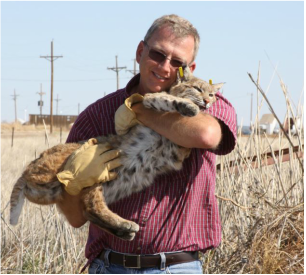
James D. Ray, Wildlife Biologist/Scientist, Consolidated Nuclear Security, LLC, USDOE/NNSA Pantex Plant; Beekeeper
From Honeybees to Monarchs – A High and Rolling Plains Perspective AND An Update on the U. S. Department of Energy/National Nuclear Security Administration Pollinator Initiative: Beekeeping in the High and Rolling Plains can be a tricky proposition and may be influenced by soil type, surrounding land use, and the amount and timing of precipitation. This speaker will discuss beekeeping in the region and from a perspective of a biologist with a career of work and insight in the habitats in this region’s surprisingly diverse landscape; much of which may apply to other insect pollinators. The presentation will also touch on monarch butterfly use of the region and briefly on the success residents can have with attracting hummingbirds. Lastly, the speaker will discuss the U. S. Department of Energy/National Nuclear Security Administration’s activities under the White House Pollinator Initiative as well as the status of pollinator work by the agencies’ Pantex Plant.
A Dalhart native, Jim is a 25-year veteran of the High and Rolling Plains’ wildlife management and research community. After earning degrees at Texas Tech University and South Dakota State University, Jim has worked for the U. S. Fish and Wildlife Service, Texas Parks and Wildlife Department, and several managing contractors of the 18,000-acre U.S. Department of Energy/National Nuclear Administration Pantex Plant. Jim has guided management on private and public lands and was a major player “on the ground” and “administratively” during the beginnings of the Playa Lakes Joint Venture. His research, much of which has been in collaboration with universities, has included studies on invertebrates, communities associated with black-tailed prairie dog colonies, shorebirds, songbirds, waterfowl, raptors, sandhill cranes, and the effects of wind energy development on wildlife.
Jim’s interest in pollinators began with tagging monarch butterflies in the early days of his career and has grown to include developing hummingbird habitat at his residences, engaging in beekeeping, and mapping of milkweed patches on the Pantex Plant. He has published a number of honey bee and hummingbird articles in various magazines. Jim has proposed work that he
hopes propels Pantex and USDOE to the same level of successes with pollinator work that has earned his migratory bird work the distinction as a four-time finalist for the Presidential Migratory Bird Federal Stewardship Award. Jim serves on the newly formed USDOE Pollinator Initiative Working Group and has served on many Farm Bill and natural resource committees throughout his career. He currently serves on the Advisory Boards of the College of Agricultural Sciences and Natural Resources and the Department of Natural Resources Management at Texas Tech University.
From Honeybees to Monarchs – A High and Rolling Plains Perspective AND An Update on the U. S. Department of Energy/National Nuclear Security Administration Pollinator Initiative: Beekeeping in the High and Rolling Plains can be a tricky proposition and may be influenced by soil type, surrounding land use, and the amount and timing of precipitation. This speaker will discuss beekeeping in the region and from a perspective of a biologist with a career of work and insight in the habitats in this region’s surprisingly diverse landscape; much of which may apply to other insect pollinators. The presentation will also touch on monarch butterfly use of the region and briefly on the success residents can have with attracting hummingbirds. Lastly, the speaker will discuss the U. S. Department of Energy/National Nuclear Security Administration’s activities under the White House Pollinator Initiative as well as the status of pollinator work by the agencies’ Pantex Plant.
A Dalhart native, Jim is a 25-year veteran of the High and Rolling Plains’ wildlife management and research community. After earning degrees at Texas Tech University and South Dakota State University, Jim has worked for the U. S. Fish and Wildlife Service, Texas Parks and Wildlife Department, and several managing contractors of the 18,000-acre U.S. Department of Energy/National Nuclear Administration Pantex Plant. Jim has guided management on private and public lands and was a major player “on the ground” and “administratively” during the beginnings of the Playa Lakes Joint Venture. His research, much of which has been in collaboration with universities, has included studies on invertebrates, communities associated with black-tailed prairie dog colonies, shorebirds, songbirds, waterfowl, raptors, sandhill cranes, and the effects of wind energy development on wildlife.
Jim’s interest in pollinators began with tagging monarch butterflies in the early days of his career and has grown to include developing hummingbird habitat at his residences, engaging in beekeeping, and mapping of milkweed patches on the Pantex Plant. He has published a number of honey bee and hummingbird articles in various magazines. Jim has proposed work that he
hopes propels Pantex and USDOE to the same level of successes with pollinator work that has earned his migratory bird work the distinction as a four-time finalist for the Presidential Migratory Bird Federal Stewardship Award. Jim serves on the newly formed USDOE Pollinator Initiative Working Group and has served on many Farm Bill and natural resource committees throughout his career. He currently serves on the Advisory Boards of the College of Agricultural Sciences and Natural Resources and the Department of Natural Resources Management at Texas Tech University.

Lauren Jansen Simpson, JD, Clinical Assistant Professor, University of Houston Law Center (photo by Elena Hawthorne)
How I Came to Love the Syrphid Fly─from the Journal of a Citizen Scientist: Syrphid flies (also called hover flies or flower flies) are important contributors to pollination and to the overall health of any garden. But most people have never heard of them or don’t know what an important role they play. This presentation will (1) briefly introduce Syrphidae, their role in pollination and garden health, and how the speaker came to embrace them and all pollinators, and (2) showcase syrphid flies’ beauty through photographs from the speaker's own wildlife-habitat gardens.
Since early 2015, Lauren Simpson has spent her spare time transforming her home gardens into a pollinator-friendly habitat (currently a Certified Wildlife Habitat and Monarch Waystation 10925) and promoting pollinator conservation, education, and gardening through an educational Facebook community, “St. Julian’s Crossing-wildlife habitat,” the name adopted for her family’s Monarch Waystation. Ms. Simpson’s current citizen-science project is to identify and to catalog the pollinators that visit St. Julian’s Crossing.
Lauren is a recent member of Butterfly Enthusiasts of Southeast Texas and the Native Plant Society of Texas, and she actively volunteers in her neighborhood gardening group, the Oak Forest Community of Gardeners. Ms. Simpson is a Clinical Assistant Professor at the University of Houston Law Center teaching legal research and writing. She earned her B.A. (cum laude) in French and International Studies at Washington University in St. Louis, Missouri in 1988. She obtained her J.D. (cum laude) from the University of Houston Law Center in 1994.
How I Came to Love the Syrphid Fly─from the Journal of a Citizen Scientist: Syrphid flies (also called hover flies or flower flies) are important contributors to pollination and to the overall health of any garden. But most people have never heard of them or don’t know what an important role they play. This presentation will (1) briefly introduce Syrphidae, their role in pollination and garden health, and how the speaker came to embrace them and all pollinators, and (2) showcase syrphid flies’ beauty through photographs from the speaker's own wildlife-habitat gardens.
Since early 2015, Lauren Simpson has spent her spare time transforming her home gardens into a pollinator-friendly habitat (currently a Certified Wildlife Habitat and Monarch Waystation 10925) and promoting pollinator conservation, education, and gardening through an educational Facebook community, “St. Julian’s Crossing-wildlife habitat,” the name adopted for her family’s Monarch Waystation. Ms. Simpson’s current citizen-science project is to identify and to catalog the pollinators that visit St. Julian’s Crossing.
Lauren is a recent member of Butterfly Enthusiasts of Southeast Texas and the Native Plant Society of Texas, and she actively volunteers in her neighborhood gardening group, the Oak Forest Community of Gardeners. Ms. Simpson is a Clinical Assistant Professor at the University of Houston Law Center teaching legal research and writing. She earned her B.A. (cum laude) in French and International Studies at Washington University in St. Louis, Missouri in 1988. She obtained her J.D. (cum laude) from the University of Houston Law Center in 1994.
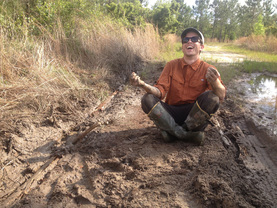
Robinson Sudan, Biologist, New Leaf, and the Pollinator Partnership
Bee Diversity of the Sky Islands: defining habitats and expanding international awareness: Funded by a grant from the National Park Service, New Leaf and our partners in the United States and Mexico will be conducting bee surveys in high elevation and unique habitats in the Sky Islands of the southwest United States and northwest Mexico.
The Sky Islands region is known as a global hotspot of bee biodiversity. However, despite this, much of the bee diversity at high elevations remains relatively poorly documented. By engaging field volunteers from both the United States and Mexico, as well as funding a scholarship for a qualified Mexican student to attend the American Museum of Natural History’s Bee Course in the Chiricahua Mountains of Arizona, we hope to increase awareness on both sides of the border and to better document the diversity of bees in this important region. Additionally, this project will provide the basis for exciting research collaborations with the Jha lab at the University of Texas at Austin on the community ecology and population genetics of bees in these isolated montane habitats.
Robinson’s research has focused on bee community ecology and spatial distribution of resources in forests of the southeast United States and montane habitats of the Sky Islands. Robinson has worked as a regional biologist with the Pollinator Partnership for five years, but his current focus is New Leaf, a Texas-based ecological restoration and conservation non-profit. New Leaf’s mission is to conduct and promote research and education on conservation issues affecting Texas and the Southwest, as well as to provide consulting services to private landowners interested in restoring ecological functioning or in implementing holistic grazing/agricultural practices.
Bee Diversity of the Sky Islands: defining habitats and expanding international awareness: Funded by a grant from the National Park Service, New Leaf and our partners in the United States and Mexico will be conducting bee surveys in high elevation and unique habitats in the Sky Islands of the southwest United States and northwest Mexico.
The Sky Islands region is known as a global hotspot of bee biodiversity. However, despite this, much of the bee diversity at high elevations remains relatively poorly documented. By engaging field volunteers from both the United States and Mexico, as well as funding a scholarship for a qualified Mexican student to attend the American Museum of Natural History’s Bee Course in the Chiricahua Mountains of Arizona, we hope to increase awareness on both sides of the border and to better document the diversity of bees in this important region. Additionally, this project will provide the basis for exciting research collaborations with the Jha lab at the University of Texas at Austin on the community ecology and population genetics of bees in these isolated montane habitats.
Robinson’s research has focused on bee community ecology and spatial distribution of resources in forests of the southeast United States and montane habitats of the Sky Islands. Robinson has worked as a regional biologist with the Pollinator Partnership for five years, but his current focus is New Leaf, a Texas-based ecological restoration and conservation non-profit. New Leaf’s mission is to conduct and promote research and education on conservation issues affecting Texas and the Southwest, as well as to provide consulting services to private landowners interested in restoring ecological functioning or in implementing holistic grazing/agricultural practices.
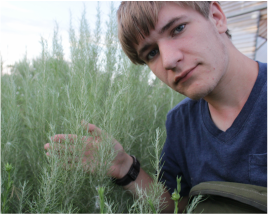
Nathan Taylor, Sul Ross State University Herbarium; Tahoka Lake Trip Leader
Nathan Taylor is a Graduate Student studying botany at Sul Ross University. He grew up in the high plains region of Texas and developed his appreciation for plants there. He was a Texas Master Naturalist from 2009 to 2012 with the Llano Estacado chapter. With the Texas Master Naturalists, he obtained much field experience on the southern end of the Llano Estacado and honed his plant identification skills. Nathan currently works in the Sul Ross State University Herbarium (SRSC), a treasury of botanical information on the Trans-Pecos and the surrounding regions. Here, he studies a group of plants in the genus Euphorbia (the group that used to be Chamaesyce).
Nathan Taylor is a Graduate Student studying botany at Sul Ross University. He grew up in the high plains region of Texas and developed his appreciation for plants there. He was a Texas Master Naturalist from 2009 to 2012 with the Llano Estacado chapter. With the Texas Master Naturalists, he obtained much field experience on the southern end of the Llano Estacado and honed his plant identification skills. Nathan currently works in the Sul Ross State University Herbarium (SRSC), a treasury of botanical information on the Trans-Pecos and the surrounding regions. Here, he studies a group of plants in the genus Euphorbia (the group that used to be Chamaesyce).
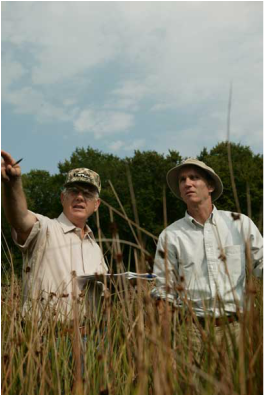
David Wolfe, Director, Conservation Strategy and Habitat Markets with Environmental Defense Fund
Monarch Butterfly Habitat Exchange: Habitat exchanges are emerging as a highly efficient and effective tool for achieving conservation goals across broad landscapes. Exchanges are essentially conservation marketplaces that enable private working landowners (farmers, ranchers and forestland owners) to receive a new source of income by generating and selling credits that represent beneficial outcomes for at-risk species and their habitats. Buyers include a variety of public and private sources and typically fall into one of three categories: voluntary mitigation, compensatory mitigation and philanthropic conservation investments. The market-based approach of exchanges ensures that the greatest conservation return is achieved for each dollar invested and the fact that credits are based on outcomes (not practices) ensures that buyers know exactly how much conservation they are getting for their investment. EDF has been working with stakeholders across the western U.S. to establish exchanges for a variety of at-risk species and we have recently initiated an effort for the monarch butterfly. In this presentation, I will describe how a habitat exchange works, as well as our vision for the development and implementation of the Monarch Butterfly Habitat Exchange.
David Wolfe (B.S. and M.E. Agricultural Engineering, University of Florida and M.S. Ecology, University of Georgia) is Director, Conservation Strategy and Habitat Markets with Environmental Defense Fund. David began his conservation career as a field ecologist with The Nature Conservancy in 1992 and he has since held a variety of conservation science, stewardship and management positions. In 2000 he began working as a scientist with EDF to implement incentive-based programs for conservation of endangered species on private lands. This work involved the development and implementation of safe harbor and Farm Bill conservation programs to benefit endangered species, including the golden-cheeked warbler, black-capped vireo, Houston toad and ocelot. David has over a decade of experience in developing habitat markets for the conservation and recovery of at-risk species, including the golden-cheeked warbler, lesser prairie-chicken and greater sage grouse. He is currently taking a leadership role in the development of a monarch butterfly habitat exchange.
Monarch Butterfly Habitat Exchange: Habitat exchanges are emerging as a highly efficient and effective tool for achieving conservation goals across broad landscapes. Exchanges are essentially conservation marketplaces that enable private working landowners (farmers, ranchers and forestland owners) to receive a new source of income by generating and selling credits that represent beneficial outcomes for at-risk species and their habitats. Buyers include a variety of public and private sources and typically fall into one of three categories: voluntary mitigation, compensatory mitigation and philanthropic conservation investments. The market-based approach of exchanges ensures that the greatest conservation return is achieved for each dollar invested and the fact that credits are based on outcomes (not practices) ensures that buyers know exactly how much conservation they are getting for their investment. EDF has been working with stakeholders across the western U.S. to establish exchanges for a variety of at-risk species and we have recently initiated an effort for the monarch butterfly. In this presentation, I will describe how a habitat exchange works, as well as our vision for the development and implementation of the Monarch Butterfly Habitat Exchange.
David Wolfe (B.S. and M.E. Agricultural Engineering, University of Florida and M.S. Ecology, University of Georgia) is Director, Conservation Strategy and Habitat Markets with Environmental Defense Fund. David began his conservation career as a field ecologist with The Nature Conservancy in 1992 and he has since held a variety of conservation science, stewardship and management positions. In 2000 he began working as a scientist with EDF to implement incentive-based programs for conservation of endangered species on private lands. This work involved the development and implementation of safe harbor and Farm Bill conservation programs to benefit endangered species, including the golden-cheeked warbler, black-capped vireo, Houston toad and ocelot. David has over a decade of experience in developing habitat markets for the conservation and recovery of at-risk species, including the golden-cheeked warbler, lesser prairie-chicken and greater sage grouse. He is currently taking a leadership role in the development of a monarch butterfly habitat exchange.
Barbara Willy, Executive Director/Founder, Monarch Gateway
Milkweed Propagation Workshops I and II - co-leader/instructor
Barbara Keller-Willy, former corporate continuous improvement executive with Siemens Corporation, is now Founder and Director of a Fort Bend County non-profit, Monarch Gateway. Monarch Gateway seeks to create contiguous pollinator habitat across the coastal and central flyways of Texas. Ms. Willy is a current two-term State Commissioner and sits on an Advisory Board in the City of Sugar Land where she lives. She is a lead partner with the Field Museum in Chicago and US Fish and Wildlife in the creation of a multi-city Urban Monarch Conservation Plan, President-elect of the land conservancy, Native Prairies Association of Texas, and serves in various roles in other community service organizations such as Rosenberg Lion's Club, Sugar Land Garden Club and Brazos Bend State Park. A certified Texas Master Naturalist with Fort Bend's Coastal Prairie Texas Master Naturalist chapter, she has long been a champion of our dwindling coastal prairie habitat and its inhabitants, some of which are endangered species or species of concern. Willy is caretaker and owner of a blackland prairie family homestead in Milam County. She is also committed to educating the children of our communities because they will be the future caretakers of our land.Her interest in native prairie restoration led her on an eight-year quest to develop a propagation method for the finicky native milkweeds of Texas. Last year Willy donated 7000 native milkweed plants to pollinator projects across Texas. More than two years ago, Willy, in her role as Founder and Director of Monarch Gateway, began working with cities in Fort Bend County to create an Urban Pollinator/Monarch Conservation Model with the intention of expanding along the central and coastal flyways and other communities in Texas. City employees from surrounding municipalities, but especially Sugar Land, helped develop a plan that would deliver meaningful results and be sustainable long-term.
Karen Wright, PhD Texas A&M, Assistant Curator of the Insect Collection
Native Bee ID Workshop II - co-leader/instructor; Tahoka Lake - trip leader/entomologist
Karen Wright received a BA in Biology and a BS in Environmental Science at the University of Delaware in 1996. She became interested in insects while volunteering at the Southwest Research Station in Portal, AZ and started her master’s degree in Entomology at Oregon State in 1997. Her dissertation was on the true bugs and beetles of hazelnut orchards in Oregon. After her Master’s she worked for almost ten years for the Sevilleta Long-Term Research Program based out of the University of New Mexico as a field crew leader. During this time, she developed an interest in native bee ecology and taxonomy and she started a long-term bee monitoring program and a plant phenology project that are currently in their 15th year. Karen took The Bee Course in 2001 and has become an accomplished bee taxonomist , specializing in the bees of the southwest. In 2009, Karen started her PhD program at the University of New Mexico in Dr. Kelly Miller’s lab of insect systematics. She is currently wrapping up her dissertation on the evolution of diet breadth in Melissodes Latreille bees and will start as the new Assistant Curator of the Insect Collection at Texas A & M University this June. Her main research interests include native bee community ecology, diet breadth of native bees, and plant flowering phenology.

